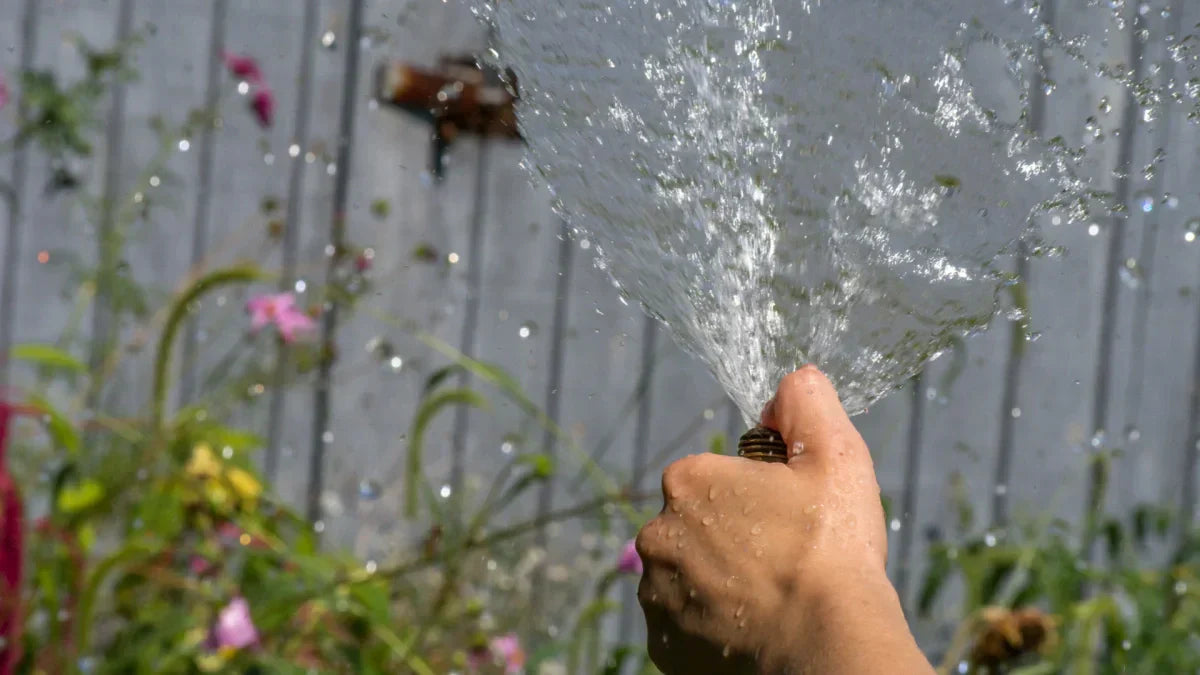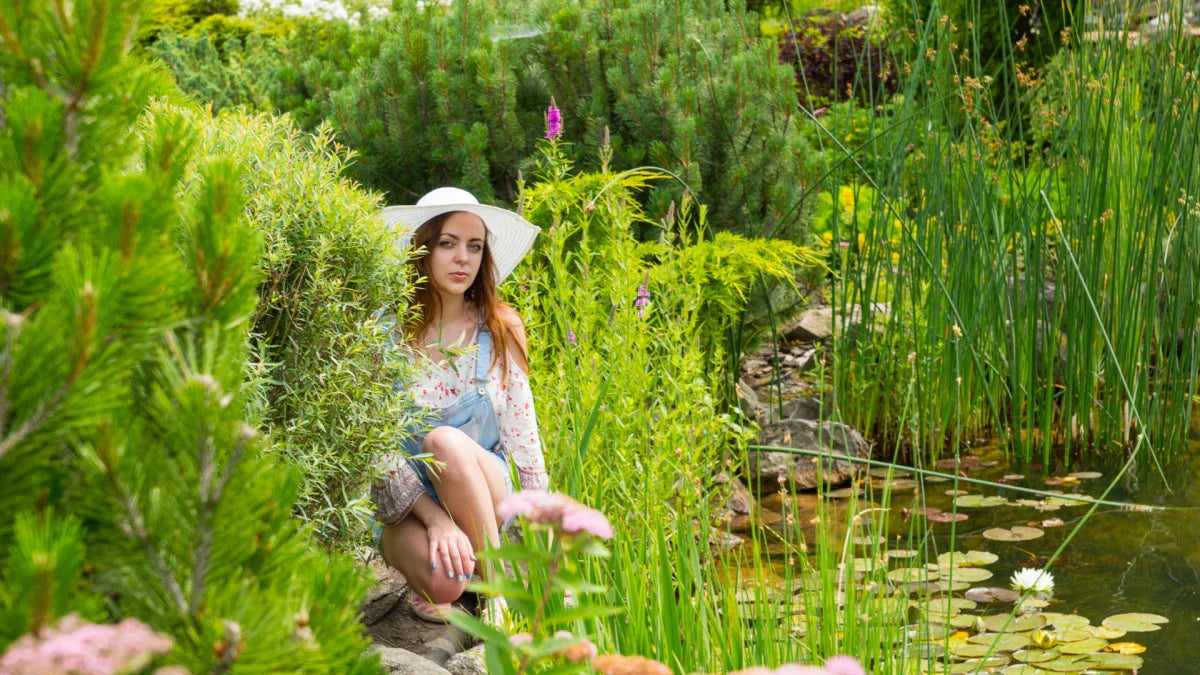Picture this: you’re topping off tomatoes with a watering can, and right beside you sits a small garden pond rich with life. It feels natural to dip and pour—but is pond irrigation actually safe and smart for your plants? The short answer: yes, with a little testing and the right setup. Pond water often carries dilute nutrients that flowers and ornamentals love. The longer answer is below—how to assess safety, manage impurities, and use Poposoap’s solar-powered gear to make reuse pond water easy and responsible. Here’s your field guide to pond to garden water use.
1) Water Safety Assessment
Start with a quick check so you irrigate confidently rather than guessing.
- Clarity & Smell: If the water is tea-colored from leaves but smells fresh, that’s typically fine for ornamentals. A rotten-egg or sewage odor signals low oxygen and possible anaerobic bacteria—don’t use that on edibles.
-
Basic Tests: Use an inexpensive test kit for ammonia, nitrite, nitrate, and pH. Aim for near-zero ammonia/nitrite and moderate nitrate (a plant food). pH between ~6.5–8.2 is generally acceptable for landscape use.

- Algae Status: A green tint from suspended algae is common; heavy blooms can release toxins when they crash. If the water is intensely pea-soup green, clarify first (see filtration below) before irrigating.
- Fish & Wildlife: If you keep fish, never drop the pond level below their safe zone. Irrigate in small batches, then let the pond recover.
- Local Rules: Some municipalities treat pond water like graywater; check guidance before widespread use.
2) Impurities and Nutrient Content
Pond water is a moving target, not distilled water—and that’s usually a good thing.
- Natural Nutrients: Fish waste and decomposing leaves produce nitrates and trace minerals that act like a mild fertilizer for ornamentals and shrubs. This is a core benefit of reuse pond water.
- Fine Solids: Silt and suspended organics can clog emitters. Let a filled bucket sit for 30 minutes and pour off the clearer top, or pre-filter through a mesh bag.
- Tannins: Brown “tea” from leaves isn’t harmful to most plants; it’s mostly aesthetic in the pond.
- Hard Water Salts: If your top-ups come from very hard tap water, salts accumulate over time. Rotate ponds or mix 1:1 with rainwater for edibles.
- Pathogens: As with any outdoor water, avoid spraying directly onto edible leaves close to harvest. Apply to soil, not foliage, and water early so surfaces dry by midday.
3) Pump and Filter Recommendations
Moving pond water neatly to beds is easier—and safer—when you polish it first and deliver it gently.
- Clarify Before You Irrigate: A Poposoap Solar Pond Filter uses layered foams and bio-media (and models with a UV clarifier) to capture debris and curb green water so you’re not distributing sludge to flowerbeds. Because it’s solar-powered, you can position the panel in sun and the pond in partial shade—no cords across the yard.
- Circulation for Healthier Source Water: Poposoap Floating Fountains and Solar Fountain Pumps create surface movement and oxygenation, which discourages foul, anaerobic conditions. Healthier pond water = better irrigation water.
- Move Water Where You Need It: Poposoap solar fountain pumps span practical flows—from compact units around ~80–160 GPH for small container ponds up to higher-throughput models in the 280–680 GPH class for larger water gardens. In real use, these are ideal for filling a watering can, topping a rain barrel, or feeding a low-head drip line along raised beds. For higher lift or a clean sheet into a storage tote, a Poposoap Waterfall Kit offers robust, continuous circulation you can tee into with a valve.
- Pre-filter at the Intake: Slip a sponge pre-filter or small crate with coarse foam over the pump intake so bits of algae and leaf fines don’t reach your garden emitters. It also protects the pump and reduces maintenance.
4) Poposoap Equipment Support
Poposoap designs solar, off-grid gear to keep water moving and clear without wiring or ongoing energy costs—perfect for sustainable pond irrigation.
- Solar Pond Filters: Modular boxes with mechanical foams and bio media (plus UV options on select models) reduce turbidity and stabilize water quality so you irrigate with cleaner water and avoid clogging.
- Solar Fountain Pumps & Floating Fountains: Adjustable nozzles let you tune spray height to minimize evaporation while maintaining oxygen. Floating units sit exactly where surface stagnation forms, improving water quality before you draw it off.
- Solar Aerators: On hot days, you can lower fountain height to save water and run an aerator to maintain dissolved oxygen—keeping source water sweet for the garden.
- Waterfall Kits & Spillways: Low, laminar sheets re-oxygenate water with minimal mist. A side tap or quick-connect from the return line makes filling a watering can or barrel simple.
- Battery Backup & Extension Leads: Keep flow steady through passing clouds and place panels in optimal sun, independent of where the pond sits.
- Durable Housings: UV-stable ABS and IP-rated components make regular outdoor use and quick rinses stress-free.
5) Safe Operation Guidelines
A few disciplined habits protect both pond life and plants.
- Draw Modest Volumes: Irrigate in short sessions and watch the waterline. Refill with rainwater when possible; if using tap, dechlorinate and temperature-match.
- Water the Soil, Not the Salad: For edibles, apply water at the base, not on leaves. Pause irrigation 24–48 hours before harvesting leafy crops if you’ve sprayed foliage.
- Morning is Best: Early irrigation reduces fungal risk and lets beds dry at the surface by evening.
- Keep the System Clean: Rinse Poposoap filter foams in pond water every 2–4 weeks to maintain flow; clear the pre-filter more often during leaf-drop.
- Mind Chemistry Swings: After heavy rain or a big water change, recheck pH and ammonia before pulling water for vegetables.
- Protect Fish: Maintain a deep refuge zone and never pump below safe depth. Aerate during heatwaves so oxygen stays high while you divert some water to the garden.

Using pond water for irrigation is a smart, sustainable move when you assess safety, manage impurities, and deliver with care. Polish the water with a Poposoap Solar Pond Filter, keep it oxygenated with a Floating Fountain or Solar Aerator, and move it efficiently to beds using solar pumps and tidy intake pre-filters. Done right, pond to garden water use becomes a win-win: fewer hose refills, happier ornamentals, and a healthier pond that powers your landscape naturally.






Leave a comment
All comments are moderated before being published.
This site is protected by hCaptcha and the hCaptcha Privacy Policy and Terms of Service apply.